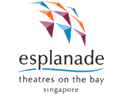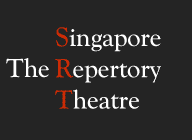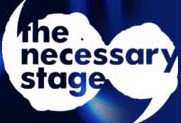OTGV #42 - Diabetes
Broadcast Date: 24/11/03
Each year over three hundred thousands Singapore visit the polyclinics to treat their diabetes.
Yet this staggering numbers may be the tip of the ice-berg.
The 1998 National Health Survey found that as high as one out of two diabetic Singaporeans went un-diagnosed.
Chong Ching Liang examines diabetes situation here in this week's On the Grapevine.
========================
Diabetes.
Doctors dub it the silent killer.
People have suffered from it for years without even knowing that they are down with the disease.
And they pay for this ignorance with terminal health threats at the end.
Hi Welcome to On the Grapevine with me Chong Ching Liang as I take a look at diabetes and Singaporeans.
First off what is diabetes?
It is a condition where the body doesn't have enough insulin.
President of the Diabetics Society of Singapore or DSS Tan Hwee Huan explains.
"The insulin is a hormone produced by the body. It is produced by the pancreas and it is the hormone that actually helps us to bring the sugar into the body. And if you do not have that what happens is the sugar remains in the blood stream and you have a condition called high sugar level and that's diabetes."
And there are 2 kinds of people who suffer from this disease which is categorized into Type 1 and Type 2.
Type 1 diabetics are insulin jabs-dependent.
Their body no longer or could never produce insulin.
In Singapore, most diabetics are of the common Type 2 variety says Dr Tan Hwee Huan.
"Most of the diabetics are actually type2 diabetics and that is more like a lifestyle kind of disease. It's actually associated with obesity, that is a weight problem and non-active sedentary kind of lifestyle. Singaporeans are mainly dependent on cars rather than public transportation, walking and the other thing maybe diet. High fat diet in most of our cultural food items."
Here are some somber statistics regarding diabetes in Singapore.
It's the sixth most common cause of death in Singapore.
One in every eleven Singaporeans is diabetic.
What is even more worrying, the last national health survey conducted 5 years ago found that over 6 out of ten diabetics are not aware they are diabetic.
DSS' Honorary Secretary, Dr Kevin Tan says it is hard to ascertain the historical baseline for the number of diabetics in Singapore.
"We don't have all the data. We have an idea of how big the problem is. We know that kidney disease is one of the top ten killers in Singapore. We do know that people with diabetes form about slightly less than half, about 47% of all those undergoing kidney dialysis."
Dr Kevin Tan also cautioned against over labeling diabetes as a lifestyle disease.
"I know it is seen as a lifestyle disease but at the same time we try not to label it as a lifestyle disease because once you do that, it means that once you see someone with diabetes you say 'oh, you get diabetes because you are living like that. What do you expect?' There is a genetic input that sometimes you cannot avoid and then of course there is the lifestyle bit which of course part of it is culture and that's why Indians have the highest prevalence in Singapore and part of it is over-weight, not exercising enough. You know all the modern conveniences, cars and all that."
In developed countries, one in twenty suffers from diabetes.
Singapore's rate is much higher.
Dr Kevin Tan explains why.
"Part of it is probably genes because even among our population the Indians skew the figures because it is so high among Indians and it is high among Indians not just because of their culture what they eat but it is also the genes. So genes is definitely one factor. If you look at the United States if you ask them who among your population is at high risk of getting diabetes, they will tell you it is the Asian group. Straightaway we get lumped in the high risk category. We regarded even more high-risk than Caucasians."
The genetic trend becomes even more worryingly clear when younger and younger Singaporeans are coming down with diabetes.
Dr Tan Hwee Huan.
"Working in the hospital, we are actually getting quite a few patients who are young onset. This means they are diagnosed with diabetes even in their teens. Most of them actually have very strong family history. Either father or mother may have diabetes. Because of that, in our clinical guidelines, we have a clause: Anyone with family history of diabetes is considered at-risk patients. That means they are more prone to developing diabetes sometime in their life time so they are actually encouraged to come forward for screening tests."
Coming forward for screening tests is important.
Dr Tan Hwee Huan says she has come across diabetics who were only diagnosed as such after 7 years.
The problem with diabetes is that the symptoms are so mild or undetectable until serious complications occur.
One of these includes end-stage kidney failure.
Singapore has the dubious honour of having the world's highest number of diabetics developing into end-stage kidney failure.
If properly monitored, this unwanted statistic can be brought down.
If diabetics are diagnosed early, that is a huge battle won.
Once the diabetics have been identified, and they are tested for early stage kidney damage, the battle against kidney failure will most likely be won.
The early stage kidney deterioration is known as microalbuminuria where there are minute traces of protein leaked into the urine via the kidneys.
The test for this condition isn't difficult nor is it slow.
Plus, there's now good clinical treatment for micro-albumin-uria.
Nearly 5 out of ten Singaporeans are diabetics who left their treatment too late.
Don't be one of the statistics.
Take a couple of screening tests to find out if you belong to the high-risk group.
And you are if any of your parents or family-line is diabetic.
Take heed.
This is Chong Ching Liang for Newsradio 938.
===============================
Related Links:
Newsradio 938 (now 938Live)
http://www.938live.sg/
Diabetic Society of Singapore
http://www.dss.org.sg
Ministry of Health
www.moh.gov.sg/cmaweb/attachments/ publication/diabetes.pdf
Each year over three hundred thousands Singapore visit the polyclinics to treat their diabetes.
Yet this staggering numbers may be the tip of the ice-berg.
The 1998 National Health Survey found that as high as one out of two diabetic Singaporeans went un-diagnosed.
Chong Ching Liang examines diabetes situation here in this week's On the Grapevine.
========================
Diabetes.
Doctors dub it the silent killer.
People have suffered from it for years without even knowing that they are down with the disease.
And they pay for this ignorance with terminal health threats at the end.
Hi Welcome to On the Grapevine with me Chong Ching Liang as I take a look at diabetes and Singaporeans.
First off what is diabetes?
It is a condition where the body doesn't have enough insulin.
President of the Diabetics Society of Singapore or DSS Tan Hwee Huan explains.
"The insulin is a hormone produced by the body. It is produced by the pancreas and it is the hormone that actually helps us to bring the sugar into the body. And if you do not have that what happens is the sugar remains in the blood stream and you have a condition called high sugar level and that's diabetes."
And there are 2 kinds of people who suffer from this disease which is categorized into Type 1 and Type 2.
Type 1 diabetics are insulin jabs-dependent.
Their body no longer or could never produce insulin.
In Singapore, most diabetics are of the common Type 2 variety says Dr Tan Hwee Huan.
"Most of the diabetics are actually type2 diabetics and that is more like a lifestyle kind of disease. It's actually associated with obesity, that is a weight problem and non-active sedentary kind of lifestyle. Singaporeans are mainly dependent on cars rather than public transportation, walking and the other thing maybe diet. High fat diet in most of our cultural food items."
Here are some somber statistics regarding diabetes in Singapore.
It's the sixth most common cause of death in Singapore.
One in every eleven Singaporeans is diabetic.
What is even more worrying, the last national health survey conducted 5 years ago found that over 6 out of ten diabetics are not aware they are diabetic.
DSS' Honorary Secretary, Dr Kevin Tan says it is hard to ascertain the historical baseline for the number of diabetics in Singapore.
"We don't have all the data. We have an idea of how big the problem is. We know that kidney disease is one of the top ten killers in Singapore. We do know that people with diabetes form about slightly less than half, about 47% of all those undergoing kidney dialysis."
Dr Kevin Tan also cautioned against over labeling diabetes as a lifestyle disease.
"I know it is seen as a lifestyle disease but at the same time we try not to label it as a lifestyle disease because once you do that, it means that once you see someone with diabetes you say 'oh, you get diabetes because you are living like that. What do you expect?' There is a genetic input that sometimes you cannot avoid and then of course there is the lifestyle bit which of course part of it is culture and that's why Indians have the highest prevalence in Singapore and part of it is over-weight, not exercising enough. You know all the modern conveniences, cars and all that."
In developed countries, one in twenty suffers from diabetes.
Singapore's rate is much higher.
Dr Kevin Tan explains why.
"Part of it is probably genes because even among our population the Indians skew the figures because it is so high among Indians and it is high among Indians not just because of their culture what they eat but it is also the genes. So genes is definitely one factor. If you look at the United States if you ask them who among your population is at high risk of getting diabetes, they will tell you it is the Asian group. Straightaway we get lumped in the high risk category. We regarded even more high-risk than Caucasians."
The genetic trend becomes even more worryingly clear when younger and younger Singaporeans are coming down with diabetes.
Dr Tan Hwee Huan.
"Working in the hospital, we are actually getting quite a few patients who are young onset. This means they are diagnosed with diabetes even in their teens. Most of them actually have very strong family history. Either father or mother may have diabetes. Because of that, in our clinical guidelines, we have a clause: Anyone with family history of diabetes is considered at-risk patients. That means they are more prone to developing diabetes sometime in their life time so they are actually encouraged to come forward for screening tests."
Coming forward for screening tests is important.
Dr Tan Hwee Huan says she has come across diabetics who were only diagnosed as such after 7 years.
The problem with diabetes is that the symptoms are so mild or undetectable until serious complications occur.
One of these includes end-stage kidney failure.
Singapore has the dubious honour of having the world's highest number of diabetics developing into end-stage kidney failure.
If properly monitored, this unwanted statistic can be brought down.
If diabetics are diagnosed early, that is a huge battle won.
Once the diabetics have been identified, and they are tested for early stage kidney damage, the battle against kidney failure will most likely be won.
The early stage kidney deterioration is known as microalbuminuria where there are minute traces of protein leaked into the urine via the kidneys.
The test for this condition isn't difficult nor is it slow.
Plus, there's now good clinical treatment for micro-albumin-uria.
Nearly 5 out of ten Singaporeans are diabetics who left their treatment too late.
Don't be one of the statistics.
Take a couple of screening tests to find out if you belong to the high-risk group.
And you are if any of your parents or family-line is diabetic.
Take heed.
This is Chong Ching Liang for Newsradio 938.
===============================
Related Links:
Newsradio 938 (now 938Live)

http://www.938live.sg/
Diabetic Society of Singapore

http://www.dss.org.sg
Ministry of Health

www.moh.gov.sg/cmaweb/attachments/ publication/diabetes.pdf







